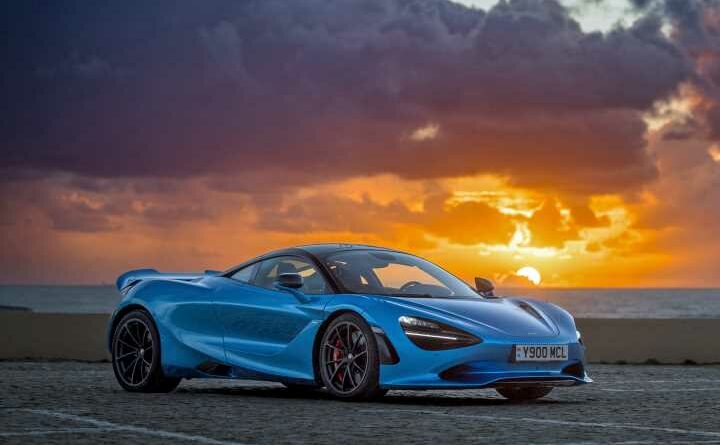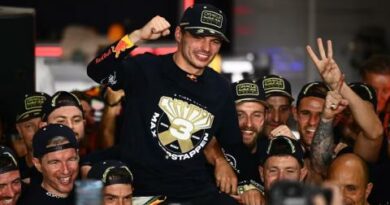2023 McLaren 750S | PH Review
Can the stellar 720S really be improved upon? You bet
By Matt Bird / Friday, 17 November 2023 / Loading comments
The supercar as we know it is almost done. Twenty years of V10 baby Lambo is finished, soon to be replaced by a plug-in V8; it would be fair to say the electrified V6 296 GTB represents the very best of mid-engined Ferrari right now better than the F8 Tributo. And make the most of the Maserati MC20 while it’s here; the Folgore EV is imminent. Against which, the McLaren 750S looks emphatically (perhaps endearingly) old school, with a focus on being as light, engaging and stupendously fast as possible, celebrating a 4.0-litre twin-turbo V8 that’s now more powerful than the ICE contribution was in the P1 before it’s too late. The Artura is an exciting, encouraging step toward an electrified future for McLaren; the 750S is hopefully the more traditional mid-engined supercar taken to its zenith.
Given what the 720S had already achieved – it was one of the great series production supercars – that’s cause for considerable excitement. Anything better ought to be extraordinary. And yes, plenty has changed, even if it might not look like it. There’s a lot common with the 720S, for sure – but 30 per cent new parts as well. The development focus was on more performance (obvs) and more engagement, hence the emphasis on the sound of the V8 with a new exhaust, the shorter final drive from the 765LT and mode selectors on the steering column like an Elva. The tracks are wider, the seats and wheels lighter, cornering balance is said to be ‘more neutral’. As evidenced in the launch story, the 750S is significant. This isn’t just another 30hp and the option to have the eye sockets body coloured.
Driving on the launch begins with a Spider, on the standard Pirelli P Zero and the regular sports seats. It’s pretty glorious, to be frank, a reminder of what McLarens always have done so well even as it smartly introduces the improvements ushered in with this update. ProActive Chassis Control 3 ensures a sumptuous, supple ride and faultless body control, the steering is peerless (without any of the kickback some McLarens have suffered) and the newly boosted brake pedal is a dream for your wannabe racing driver left foot – so far, so McLaren.
But there are crucial improvements, too. The Artura-style dials next to the driver’s display for adjusting powertrain and handling settings are smart, making on-the-fly tweaks much simpler and less fiddly than before (and therefore more likely). A McLaren mode programmed into the Speedy Kiwi button on the dash (essentially a configurable individual setting) is pre-set on this event to Sport chassis, Sport engine, big rear spoiler (lighter but larger than before) and manual mode.
It’s here that the second revelation arrives: finally, this 4.0-litre V8 sounds good. As in changing gear and accelerating for no reason good, just to hear what new noises are made; hooting and hollering as it crackle and burbles; letting out full-on guffaws at how the new exhaust (again lighter) gargles and splurts super unleaded like it’s 98 RON mouthwash. This is what we hoped a Ricardo-built, flat-plane-crank, turbo V8 in the middle of a McLaren would always sound like: racy, angry, powerful, but also with a puerile, for-kicks side. Comfort and Track are more subdued for villages and cyclists. But you’ll be back in Sport ASAFP, giggling like a kid with a whoopee cushion. This is more like it – one of the fun boxes ticked.
Shorter gear ratios, faster shifts and ignition-cut upchanges further embellish the drama, even with the roof up and just the rear window down. Put the top down and it’s a proper assault, a frenzy of rising revs, exhaust cracks and turbo rush. It’ll do nothing for concerns about what supercars will do with smaller (or non-existent) engines, but to drive a V8 of such potency and engagement is an undeniable joy. And such is the theatre, you don’t necessarily have to be going bonkers quick to enjoy it.
Of course, delve a bit further into the performance potential and the 750 is rabidly, obscenely, ever so slightly scarily rapid. Perhaps not demonstrably faster than a 720, though that was hardly ever lacking. It’s a wild ride in the way that only cars with such power and torque through one axle can feel, only getting wilder as its formidable traction and ability goads you on; even something like an MC20 or the most serious Huracans don’t romp along quite like this.
A drive in the Coupe with the more aggressive bucket seats (preferable to the electric ones) is less enjoyable, thanks to a busier route and less of a racket from a V8 that’s finally found its voice. Still, it does mean more time to appreciate the useful improvements made to the everyday experience for the 750: CarPlay works instantly and without any drama (Android Auto will follow), the nose lift is now a button (thank goodness) and works in less than half the time, and the interior feels sturdy in a way that maybe Woking-built cars haven’t always. You’ll probably want the optional stereo. When the afterburners aren’t lit and the pace is little more than a crawl, the 750S remains agreeable company. Of course, you’re missing out on its full potential, but that doesn’t feel like the end of the world. Again, the experience isn’t a million miles from what memory says a 720S was like, though it does feel improved.
It would be fair to say the specifications of the launch cars were optimised for the jobs they had to do, the track coupes quite a bit more aggressive – Senna seats, Trofeo Rs instead of P Zero Corsa, a Track Pack brake upgrade with CCM-R discs and better cooling – than the cars used for the road drive. A circuit one probably wouldn’t have been as lovely on the road; an example on regular rubber not quite as phenomenal on the track. There’s probably an optimum catch-all configuration (maybe P Zero Corsas instead of just P Zeroes, the mid-ranking sports seats, the beefy brakes), but we can also only report as we find: the most track-focused McLaren 750S currently available is utterly sensational on a circuit. Borderline unbelievable, in fact.
No two-wheel drive, mid-engined car of such lofty potential should feel so approachable and forgiving to drive; no roadgoing, series production supercar should serve to make Estoril feel like a big sprint track; no showroom-spec automobile should be able to take such abject punishment on a circuit, enduring huge stops and big cornering loads lap after lap, then come back for more. Even by the end of our track time, braking points were too early and turn-in speeds too cautious, because logic says it shouldn’t be possible. It really is hard to wrap your head around a car that cruised down the motorway streaming Off Menu also being capable of this. One of the McLaren pro hands lapped Estoril as fast in one of these as a GT3 car. It’s deranged. And addictive, crucially – there’s so much more to learn and fun to be had. Including the Dynamic mode for the ESC, before anyone points it out…
Perhaps some time in a 296, a proper strop in an MC20 or even a few miles in an Artura might temper the enthusiasm (and don’t forget the 765LT!), though it’s hard to leave a day of driving a 750S without gushing. The gripes seem inconsequential given the overwhelming positives: a map display in the dials would be handy, or perhaps even a HUD, to save peering down at the portrait screen, and just occasionally Sport can be a little too keen to kickdown or hold a gear for max drama. Which makes you feel a bit of a wally. But that’s easily avoidable in manual mode. A couple of the wheel designs look a bit fussy. The electric seat controls are fiddly. Some of the CarPlay icons are small. Nothing of any great consequence.
Lots of this will be familiar from the 720S, nevertheless, the 750S has broadened its already generous bandwidth further still, being a somehow more effusive, affable road-going supercar while also moving the goalposts on a circuit. McLaren already made a fantastic V8 supercar – it now makes an even better one.
Whether buyers will be absolutely convinced it represents enough of a leap is another question, of course. Customers with more recent 720 experience may not find the jump as substantial, and there’s perhaps also a concern that a forced induction V8 offers neither valedictory nat-asp glory nor forward-thinking PHEV intrigue. It could be deemed traditional but not old school enough – or updated but not in a far-reaching way that makes it compelling again.
Let’s hope not, because seldom has a supercar captured what the genre should be all about as consummately as the McLaren 750S. It looks incredible, it makes you feel heroic, it goes stupendously fast, it’s thrilling to drive and it’s occasionally kinda scary as well. What more, you wonder, as the mid-2020s loom, could realistically be delivered? If this can avoid the reliability and quality concerns that have dogged a number of previous McLarens – not a small thing, will grant you – the 750S is on course to become a legend in its own lifetime.
SPECIFICATION | 2023 MCLAREN 720S
Engine: 3,994cc, twin-turbo V8
Transmission: 7-speed SSG, rear-wheel drive
Power (hp): 750@7,500rpm
Torque (lb ft): 590@5,500rpm
0-62mph: 2.8sec (0-124mph 7.2/7.3 seconds)
Top speed: 206mph
Weight: 1,389kg (fluids + 90 per cent fuel, Spider 1,438kg)
MPG: 23.2
CO2: 276g/km
Price: c. £250,000
- 2021 McLaren 765LT | PH Video
- 2022 McLaren Artura | UK Review
Source: Read Full Article



